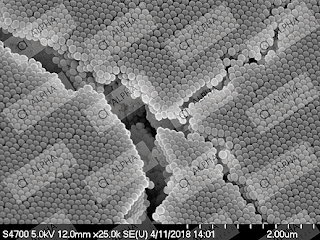In the realm of nanotechnology, silica
nanoparticles have emerged as versatile and powerful tools with a wide range of
applications. One notable advancement in this field is the development of carboxyl-functionalized magnetic silica
nanoparticles, which combine the benefits of both magnetic particles and
silica nanoparticles. In this blog post, we will delve into the fascinating
world of silica nanoparticles, with a specific focus on carboxyl-functionalized
magnetic silica nanoparticles and their remarkable potential.
Understanding
Silica Nanoparticles:
Silica nanoparticles are nanoscale
particles made of silica, a compound commonly found in nature as quartz or
sand. These particles have diameters typically ranging from 1 to 100
nanometers, allowing them to exhibit unique physical, chemical, and optical
properties. Silica nanoparticles possess a high surface area, excellent
stability, low toxicity, and the ability to be functionalized with various
molecules, making them highly adaptable for diverse applications.
Applications of
Silica Nanoparticles:
Biomedical
Applications: Silica nanoparticles have shown great promise in biomedicine. They can be
engineered to carry drugs, genes, or imaging agents, enabling targeted drug
delivery, diagnostics, and therapeutics. Silica nanoparticles have the
potential to revolutionize treatments for diseases such as cancer, where
precise targeting and controlled release of therapeutics are critical.
 |
| Silica Nanoparticles |
Environmental
Remediation: Silica
nanoparticles have been explored for environmental applications, including
water treatment, pollution control, and remediation of contaminants. Their high
surface area and ability to adsorb pollutants make them effective agents for
removing heavy metals, organic pollutants, and toxins from contaminated
environments.
Electronics and
Optoelectronics: Silica
nanoparticles are used in electronics and optoelectronics for their unique
optical and electrical properties. They find applications in displays, sensors,
solar cells, light-emitting diodes (LEDs), and optical coatings. The ability to
control the size, shape, and surface properties of silica nanoparticles allows
for tailored functionality in these applications.





.jpg)